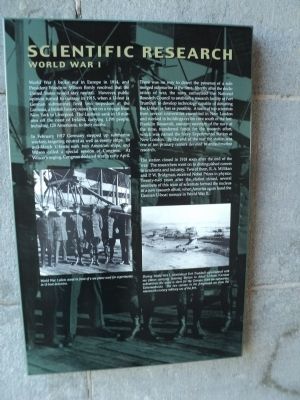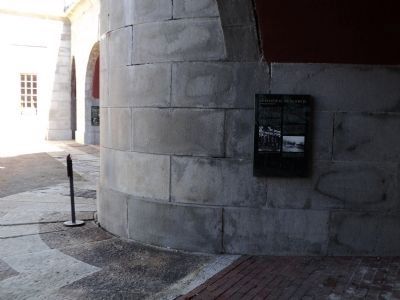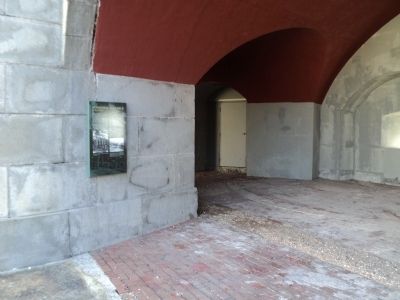Fort Trumbull in New London in New London County, Connecticut — The American Northeast (New England)
Scientific Research
World War I
World War I broke out in Europe in 1914, and President Woodrow Wilson firmly resolved that the United States would stay neutral. However, public opinion turned to outrage in 1915, when a U-boat (a German submarine) fired two torpedoes at the Lusitania, a British luxury liner on a voyage from New York to Liverpool. The Lusitania sank in 18 minutes off the coast of Ireland, carrying 1,198 people, including 128 Americans, to their deaths.
In February 1917 Germany stepped up submarine warfare, targeting neutral as well as enemy ships. In mid-March U-boats sank two American ships, and Wilson called a special session of Congress. At Wilson’s urging, Congress declared war in early April.
There was no way to detect the presence of a submerged submarine at the time. Shortly after the declaration of war, the navy authorized the National Research Council to establish a research facility at Fort Trumbull to develop technology capable of defeating the U-boat as fast as possible. A team of top scientists from several universities assembled in New London and worked in buildings on the cove south of the fort. Franklin Roosevelt, assistant secretary of the navy at the time, transferred funds for the research effort, which was named the Navy Experimental Station at New London. By the end of the war the station was one of ten primary centers devoted to antisubmarine research.
The station closed in 1918 soon after the end of the war. The researchers went on to distinguished careers in academia and industry. Two of them, R. A. Millikan and P. W. Bridgman, received Nobel Prizes in physics. Twenty-two years after the station closed, several members of this team of scientists formed the nucleus of a new research effort, when America again faced the German U-boat menace in World War II.
Erected by Fort Trumbull State Park.
Topics and series. This historical marker is listed in these topic lists: Science & Medicine • War, World I. In addition, it is included in the Former U.S. Presidents: #28 Woodrow Wilson series list. A significant historical month for this entry is February 1917.
Location. 41° 20.62′ N, 72° 5.59′ W. Marker is in New London, Connecticut, in New London County. It is in Fort Trumbull. Marker can be reached from East Street, on the left when traveling south. Marker is located in the fort at Fort Trumbull State Park. Touch for map. Marker is in this post office area: New London CT 06320, United States of America. Touch for directions.
Other nearby markers. At least 8 other markers are within walking distance of this marker. Merchant Marine (here, next to this marker); a different marker also named Scientific Research (a few steps from this marker); “Aim, Load, Fire” (a few steps from this marker); Post Civil War to 1910 (a few steps from this marker); Coast Guard (a few steps from this marker); Cold War (a few steps from this marker); Civil War (a few steps from this marker); The Third System (within shouting distance of this marker). Touch for a list and map of all markers in New London.
More about this marker. A photograph at the lower left of the marker depicts “World War I pilots stand[ing] in front of a sea plane used for experiments in U-boat detection.” A photo of sea planes at Fort Trumbull appears at the marker’s lower right. It has a caption of “During World War I, scientists at Fort Trumbull experimented with sea planes carrying listening devices to detect U-boats (German submarines; the name is short for the German word for submarine, Unterseeboot). The two cannon in the foreground are from the nineteenth-century military use of the fort.
Also see . . . History of Fort Trumbull. Friends of Fort Trumbull. (Submitted on October 16, 2011, by Bill Coughlin of Woodland Park, New Jersey.)
Credits. This page was last revised on February 10, 2023. It was originally submitted on October 16, 2011, by Bill Coughlin of Woodland Park, New Jersey. This page has been viewed 525 times since then and 7 times this year. Photos: 1, 2, 3. submitted on October 16, 2011, by Bill Coughlin of Woodland Park, New Jersey.


